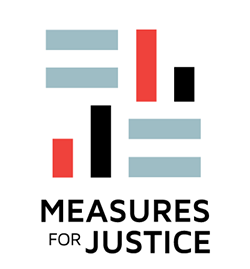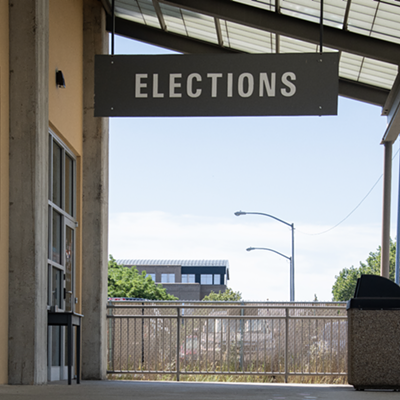Wednesday, June 7, 2017
New portal Measures for Justice publishes county-level criminal justice data in Washington
The Spokane County Jail was bursting at the seams in 2013. The average daily population of 897 inmates that year far surpassed the 672 "rated" jail beds — 133.5 percent over maximum capacity.
A jail's "rated" capacity is the number of inmates at which it can operate safely. Notably, Spokane County says the maximum capacity between its two facilities (Spokane County Jail and Geiger Corrections Center) is 896.
The 2013 numbers come from a new criminal justice data portal, Measures for Justice, that recently launched a user-friendly website with county-level justice data for six states: Washington is one of them.
The goal of the project is to compile often difficult-to-obtain local criminal justice data in order to measure decision points within each county and state, focusing on fair process, public safety and fiscal responsibility.
For example you can explore data for jail capacity, court fines and charge reductions and dismissals, among other categories.
Most of those points allow you to filter the data by race, gender, age, severity of offense, offense type and court type, depending on data availability.
For example: Nonwhite felony defendants in Whitman County had their cases dismissed at a slightly higher rate than white defendants (1.02 to 1), but white defendants in Spokane County had their cases dismissed at a higher rate than nonwhite defendants (1.18 to 1). In Okanogan County the ratio is 1.66 white-defendant cases dismissed to 1 nonwhite-defendant case dismissed. (Data spans the period from 2009 to 2013.)
In another example: 52.5 percent of people in Spokane who were required to pay court fines and fees failed to do so, which is about on par with defendants statewide. Defendants in Yakima County were the worst court fee delinquents — nearly 70 percent of defendants failed to pay their fines.
However, Spokane Regional Law and Justice Administrator Jacquie van Wormer, who is also working to compile local criminal justice data, cautions against county-to-county comparisons.
Take, for example, jail capacity in Benton and Spokane counties. According to the MFJ repository, Benton County is only using 88 percent of its jail, while Spokane is more than 30 percent over capacity.
"What is missing in this simple comparison is the fact that Benton County overbuilt their jail, and they contract out many of their beds for rent," van Wormer says. "Benton County does not have a pretrial department or risk tool at the point of first appearance. So we are in fact engaged in a greater amount of reforms around our jail population — but the average citizen might not understand that just by referencing the map."
Van Wormer says that although there is a "significant" amount of criminal justice data available at the county level, it can be difficult to obtain. Locally elected officials, such as the prosecutor and sheriff, have the data, but not all of it is in the public record.
"In addition, there is a natural reluctance for criminal justice officials to release large databases to research entities, as there is always the qualitative side to operations and decisions that is not reflected in the data," van Wormer says.
In other words, data cannot completely reflect the human element.
"I actually believe it is important to have a full understanding of operations, laws and policies before interpreting data," she says.
So far, MFJ has collected data from all 39 Washington counties, spanning 524,000 cases. This year, before launching the data portal, MFJ received funding from Google and the Chan Zuckerberg Initiative to expand data collection efforts.
The initiative has also received money from the Bureau of Justice Assistance, the Laura and John Arnold Foundation and the MacArthur Foundation, which has awarded awarded Spokane County $1.75 million as part of the foundation's Safety and Justice Challenge. The money is supposed to be used to reduce Spokane's jail population and address racial and ethnic disparities within the jail.
According to statistics on the county's website, the average daily jail population has actually increased since 2013 to 935 inmates in 2016, and 947 inmates for the 16 months from Jan. 2016 to April 2017.
Van Wormer notes that Spokane's jail population can fluctuate by hundreds of inmates from month to month.
"If we look back ten years, there were times when the population peaked at over 1180," she says. "We have been down in the 800s to low 900s many days in the past month. I think this is due in part to [the Pretrial Services office] now serving all three courts, in addition to some efforts by the jail to control the WADOC population intake."
Tags: data , criminal justice , Measures for Justice , Spokane County Jail , Washington state , Jacquie van Wormer , News , Image















